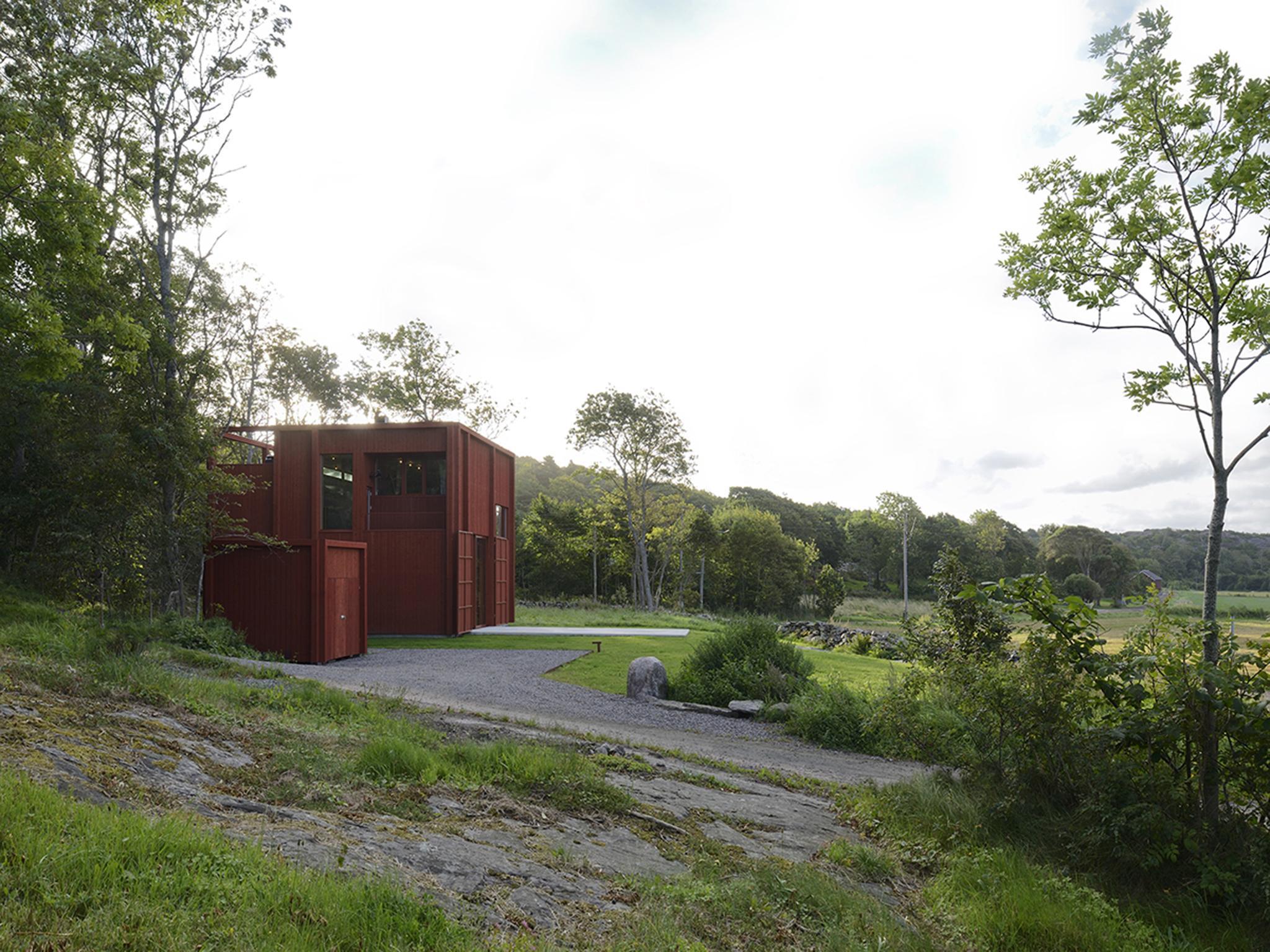Inspiring home of the week: House for a drummer in Sweden
Megan Townsend speaks to architect Andreas Lyckefors about building a contemporary house that still pays tribute to the history of the land

Inspired by an old farm stall, the House for a Drummer is located on the edge of an expansive field near the west coast of Sweden.
Gothenburg-based Bornstein Lyckefors Architects built the house for a single father of two with interests in music, sailing and nature, who wanted an open and social two-story house.
An open section through the house allows rooms to intertwine between the two floors. The ground floor is made up of a seamless concrete slab, while the other levels have varying heights and formats. Without losing living space, the floor slab is displaced vertically to create contact between the different levels and allow light to spread down the diagonal through the house.
The outside of the house is designed to be look like a straightforward warehouse, inspired by an old farm stall that once stood on the land. The “barnyard-like” doors and the timber exterior are all painted in the Swedish falu-red colour – a traditional shade used by communities on the west coast of the country and throughout the rest of Scandinavia.
We spoke to Andreas Lyckefors of Bornstein Lyckefors to find out more.
Please tell us a little about your practice: How big is it, when was it founded, etc.
Bornstein Lyckefors Arkitekter is a young architecture studio founded in 2012. The studio is run by Per Bornstein, Andreas Lyckefors and Johan Olsson. We are 16 architects working on a wide range of projects from interiors to housing and public buildings (museums). Per used to be a partner of White Architects in Gothenburg and is currently an editor at Arkitektur, a Swedish architecture magazine. Andreas was working at the Office for Metropolitan Architecture in Rotterdam. Johan has a past at Stylt Trampoli.
The Drummer House, Sweden
Show all 9What is your practice known for?
Hi-end interiors and housing, and exhibitions and museums. We received an award for a roadside museum inTanum’s world heritage site.
How would you sum up the project in five words?
Deep section, heritage, volume, material texture, landscape.
What was the brief for this project?
The client was a single dad with two kids. He wanted to build an escape from the city close to the ocean and yet within a commuting distance. He wanted a contemporary social house that worked well when filled with family and friends but also embraced him while alone.
What did you hope to solve when you designed this home?
We wanted to create a house that would be intimate and open at the same time. A convertible of houses.
What makes this space unique?
The aim was to create a house in motion. A house where spaces would flow in plan and section. The greatest challenge was to create a house that extended into the landscape, letting light fall through the section and opening up to long views, and at the same time protecting privacy and creating private indoor spaces.
What was your inspiration for this project?
We were inspired by the surrounding landscape, barns and old farmhouses. There are also older studies performed by Austrian architect Adolf Loos in early 1920’s, called “raumplan”, that we were inspired by. His idea was to order and size interior spaces based on function. Functions needing more space would create a higher section and vice versa. We didn’t follow any such rules but were inspired by the idea that working carefully in every room would create an extra dimension to the the experience of space in the house.
What was the toughest issue you encountered when this building was being designed and built?
The toughest encounter was to land a house that was contemporary and paying tribute to history at the same time.
What do you wish you could change in hindsight?
Nothing really. I would say the landscape architecture if it wasn’t because we are just starting up a new phase where we will do the landscape and design a guesthouse in relation to the main building.
What sort of experience do you hope people using this space have?
I hope they feel comfort, embraced by light, views, space and natural materials.
Please add anything else you feel is important
The house is all wood. The exterior is painted red with a traditional red Swedish white-wash often used on barns and older dwellings in rural areas. We used it to pay tribute to an old country store that used to sit on the site in the 19th century. It burned down and was never rebuilt again. Other exterior details such as the barn-like doors and the vertical elements are also found in traditional Swedish rural architecture.
An interesting detail is that half way into the project we learned that the old country store was run by my great great grandfather Andreas and his wife Beata. We had no idea. It was rather breathtaking and that was the moment we started looking deep into the historical context of the place and adding the warehouse/barn aesthetics to the house.
Subscribe to Independent Premium to bookmark this article
Want to bookmark your favourite articles and stories to read or reference later? Start your Independent Premium subscription today.

Join our commenting forum
Join thought-provoking conversations, follow other Independent readers and see their replies